
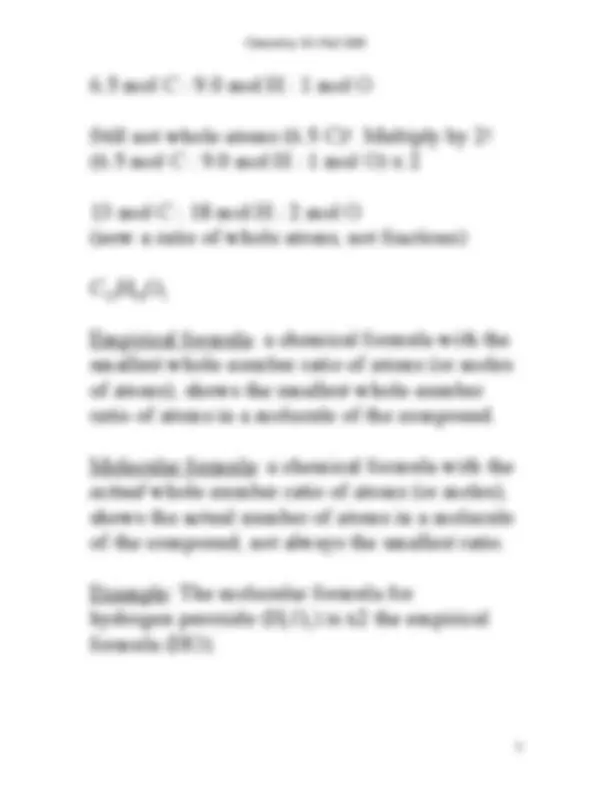
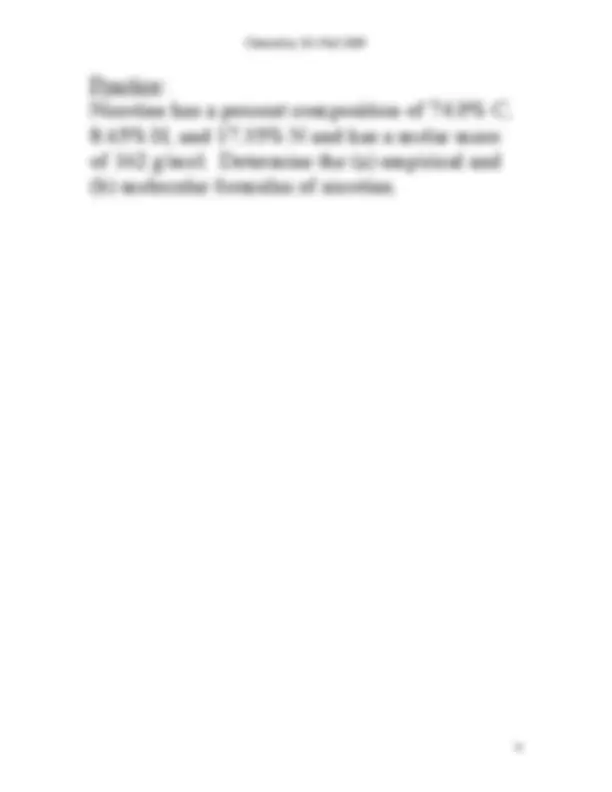
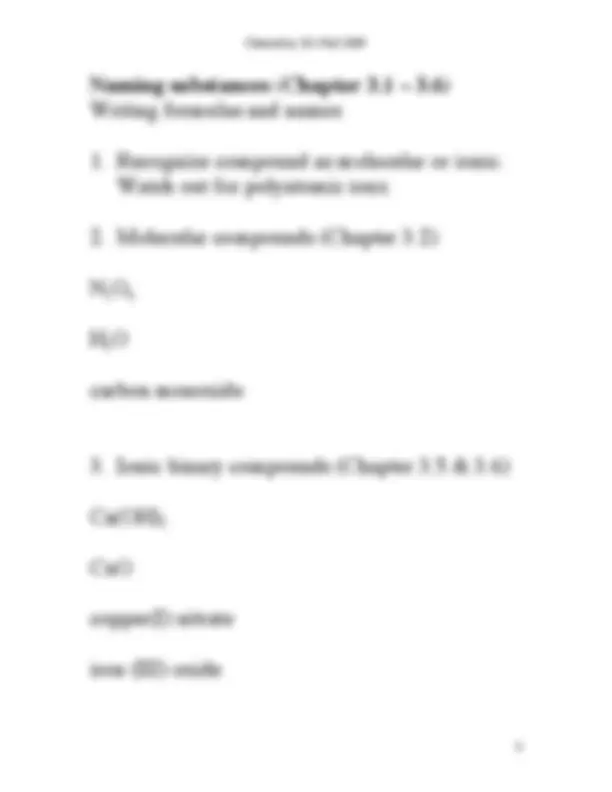
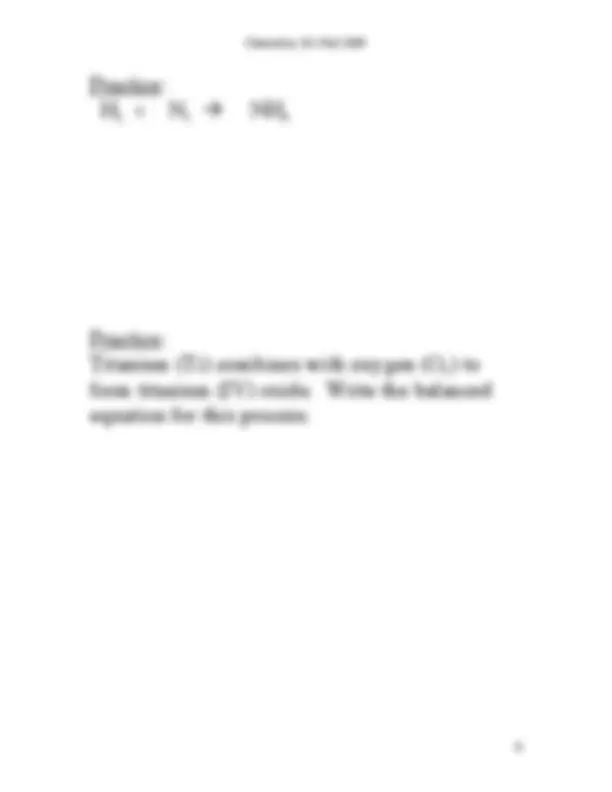
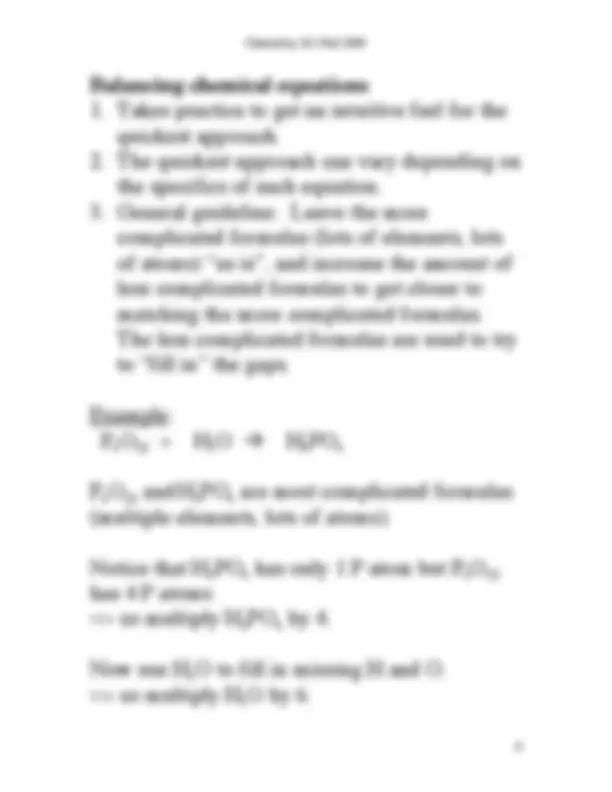
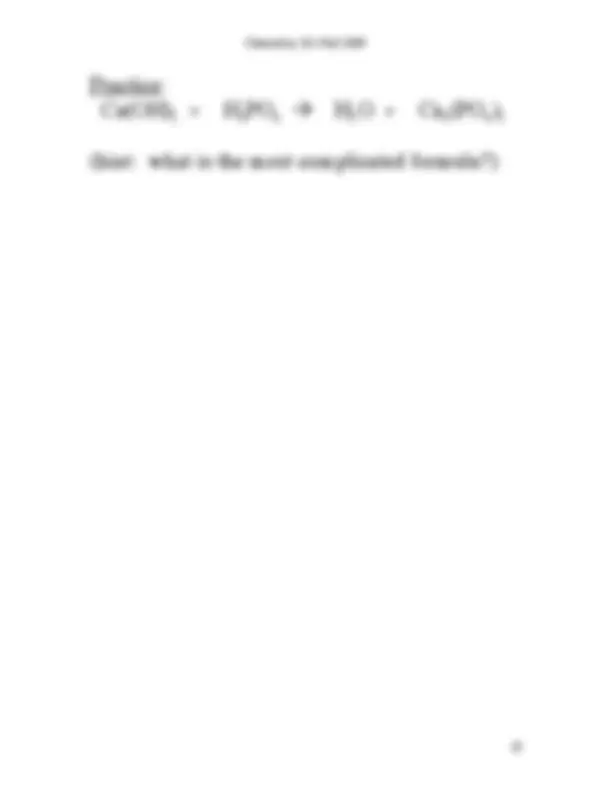


Study with the several resources on Docsity

Earn points by helping other students or get them with a premium plan


Prepare for your exams
Study with the several resources on Docsity

Earn points to download
Earn points by helping other students or get them with a premium plan
Community
Ask the community for help and clear up your study doubts
Discover the best universities in your country according to Docsity users
Free resources
Download our free guides on studying techniques, anxiety management strategies, and thesis advice from Docsity tutors
mass percent, percent composition by mass, naming substance and few other numerical related topics in chemistry
Typology: Lecture notes
1 / 11

This page cannot be seen from the preview
Don't miss anything!







Percent composition (mass percent, percent composition by mass) Mass % = mass of component in substance (grams) x 100 mass of substance (grams) What is the mass % composition of water? MM (H 2 O) = 18.0152 g/mol MM (H) = 1.0079 g/mol MM (O) = 15.9994 g/mol %H in water = 11.21% H %O in water = 88.79% O We went from chemical formula (H 2 O) to percent composition. We can also go from percent composition to the chemical formula.
Mass % composition of: 75.7% C, 8.8% H, and 15.5% O. yielded these molar ratios … 6.30 mol C : 8.7 mol H : 0.969 mol O, which is the same as saying … 6.30 atoms C : 8.7 atoms H : 0.969 atoms O. Atoms do not combine as fractions or pieces (0.30, 0.7, 0.969), so we must scale up to reach whole atoms (whole numbers). Divide by the smallest number to reach 1 for at least one element: 0.969 = 1 atom O => 1 mol O
6.30 = 6.50 atoms C => 6.5 mol C
8.7 = 9.0 atoms H => 9.0 mol H
Practice: Nicotine has a percent composition of 74.0% C, 8.65% H, and 17.35% N and has a molar mass of 162 g/mol. Determine the (a) empirical and (b) molecular formulas of nicotine.
Naming substances (Chapter 3.1 – 3.6) Writing formulas and names
Conservation of Matter Example: H 2 + Cl 2 HCl The starting atoms must equal the final atoms! A balanced chemical equation is similar to a recipe: = ratio of ingredients to products (ratio of inputs to outputs). = can have leftover ingredients (inputs). Bread example: 2 cups water + 2/3 cup sugar + 1 1/ tablespoons yeast + 1 1/2 teaspoons salt + 1/4 cup butter + 6 cups bread flour 2 loaves of bread. Car example: 4 tires + 1 engine + 2 side mirrors + lots of other parts 1 car.
Practice: H 2 + N 2 NH 3 Practice: Titanium (Ti) combines with oxygen (O 2 ) to form titanium (IV) oxide. Write the balanced equation for this process.
Practice: Ca(OH) 2 + H 3 PO 4 H 2 O + Ca 3 (PO 4 ) 2 (hint: what is the most complicated formula?)
Problem-solving example Reaction of iodine (I 2 ) and chlorine (Cl 2 ) produces IXClY. Reaction of 0.678 g of iodine with excess chlorine produces 1.246 g of IXClY. What is the empirical formula of IXClY?